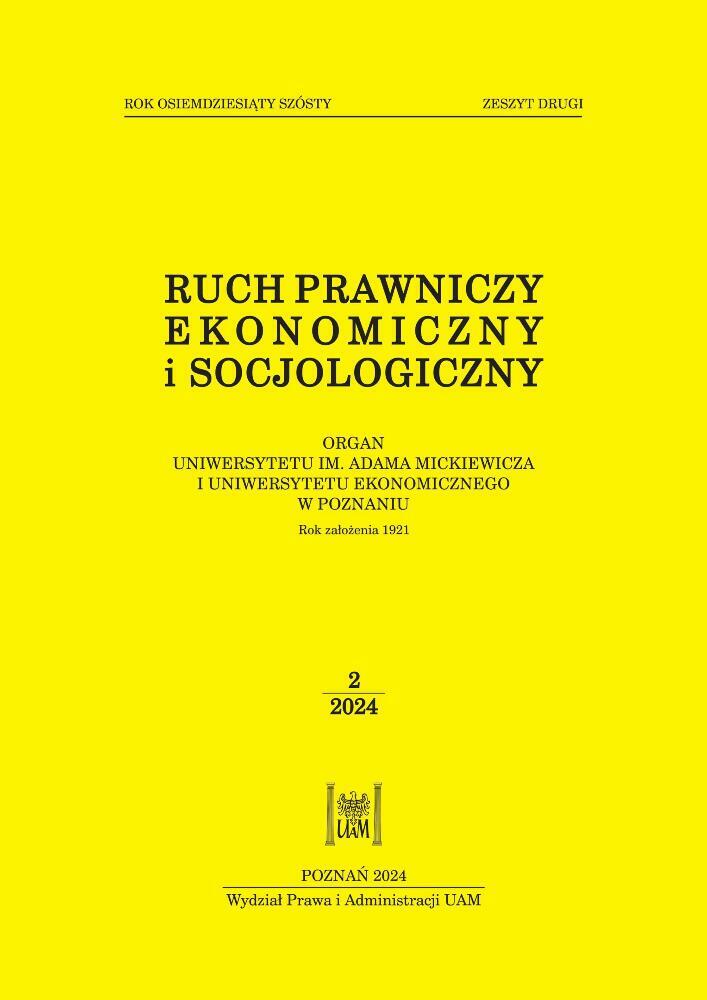Abstrakt
W Polsce, podobnie jak w innych krajach Unii Europejskiej, z dekady na dekadę ubywa małżeństw. Jest to spowodowane dwoma zjawiskami: malejącą liczbą zawieranych związków instytucjonalnych oraz wzrastającą liczbą rozwodów. W związku z tym należy zadać pytanie o to, jaka będzie przyszłość tej instytucji społecznej. Próbą odpowiedzi na nie są wyniki badań, których obiektem byli małżonkowie pozostający w długotrwałych związkach małżeńskich. Ogółem przeprowadzono 24 wywiady z osobami pozostającymi w związkach małżeńskich od co najmniej 25 lat. Respondenci z perspektywy własnych doświadczeń oraz decyzji dotyczących życia intymnego ich potomstwa wskazywali na cechy instytucji małżeńskiej, a także na zadania, jakie ta instytucja pełni wobec jednostek i społeczeństwa. Wypowiadali się również na temat przyszłości instytucji małżeństwa. Ich prognozy nie były optymistyczne. Małżeństwo, w ich opinii, jest instytucją, która wymaga wielu wyrzeczeń od partnerów, często nie dając korzyści, których spodziewają się małżonkowie. Współcześnie związek małżeński to alternatywa dla innych postaci życia osobistego, takich jak konkubinaty, samotne rodzicielstwo czy singlostwo.
Bibliografia
Acevedo, B. P., Aron, A., Fisher, H. E., i Brown, L. L. (2012). Neural correlates of marital satisfaction and well-being: Reward, empathy, and affect. Clinical Neuropsychiatry: Journal of Treatment Evaluation, 9(1), 20–31. https://www.clinicalneuropsychiatry.org/download/neural-correlates-of-marital-satisfaction-and-well-being-reward-empathy-and-affect/
Amato, P. R. (2012). Institutional, companionate and individualistic marriages: Change over time and the implication for marital quality. W: M. Garrison i E. S. Scott (red.), Marriage at the crossroads: Law, policy and the brave new world of twenty-first century families (s. 107–126). Cambridge University Press. DOI: https://doi.org/10.1017/CBO9781139087568.009
Bachand, L.L., i Caron, S. L. (2001). Ties that bind: A qualitative study of happy long-term marriages. Contemporary Family Therapy, 23, 105–121. DOI: https://doi.org/10.1023/A:1007828317271
Baker, M., i Elizabeth, V. (2014). A ‘brave thing to do’ or a normative practice? Marriage after long-term cohabitation. Journal of Sociology, 50(4), 393–407. DOI: https://doi.org/10.1177/1440783312462165
Blair, S. L. (1993). Employment, family, and perceptions of marital quality among husbands and wives. Journal of Family Issues, 14(2), 189–212. DOI: https://doi.org/10.1177/019251393014002003
Carstensen, L. L., Gottman, J. M., i Levenson, R. W. (1995). Emotional behavior in long-term marriage. Psychology and Aging, 10(1), 140–149. DOI: https://doi.org/10.1037//0882-7974.10.1.140
Carter, J. (2017). Why marry? The role of tradition in women’s marital aspirations. Sociological Research Online, 22(1), 1–14. DOI: https://doi.org/10.5153/sro.4125
Cherlin, A. J. (2004). The deinstitutionalization of American marriage. Journal of Marriage and Family, 66(4), 848–861. DOI: https://doi.org/10.1111/j.0022-2445.2004.00058.x
Cherlin, A. J. (2013). Public and private families: An introduction. McGraw Hill.
Eurostat. (2022). Population and social conditions. https://ec.europa.eu/eurostat/statistics-explained/index.php?title=Marriage_and_divorce_statistics
Fenell, D. L. (1993). Characteristics of long-term first marriages. Journal of Mental Health Counseling, 15(4), 446–460.
Ferreira, L. C., Narciso, I., i Novo, R. (2013). Authenticity, work and change: A qualitative study on couple intimacy. Families, Relationships and Societies, 2(3), 339–354. DOI: https://doi.org/10.1332/204674313X668569
Finch, J. (2007). Displaying families. Sociology, 41(1), 65–81. DOI: https://doi.org/10.1177/0038038507072284
Finkel, E. J., Cheung, E.O., Emery, L. F., Carswell, K. L., i Larson, G. M. (2015). The suffocation model: Why marriage in America is becoming an all-or-nothing institution. Current Directions in Psychological Science, 24(3), 238–244. DOI: https://doi.org/10.1177/0963721415569274
Główny Urząd Statystyczny. (2024). Narodowy Spis Powszechny Ludności i Mieszkań w 2021. https://stat.gov.pl/obszary-tematyczne/ludnosc/ludnosc/ludnosc-stan-i-struktura-ludnosci-oraz-ruch-naturalny-w-przekroju-terytorialnym-stan-w-dniu-31-grudnia,6,34.html
Hatfield, E. C., Pillemer, J. T., O’Brien, M. U., i Le, Y.-C. L. (2008). The endurance of love: Passionate and companionate love in newlywed and long-term marriages. Interpersona: An International Journal on Personal Relationships, 2(1), 35–64. DOI: https://doi.org/10.5964/ijpr.v2i1.17
Hawkins, D. N., i Booth, A. (2005). Unhappily ever after: Effects of long-term, low-quality marriages on well-being. Social Forces, 84(1), 451–471. DOI: https://doi.org/10.1353/sof.2005.0103
Hinchliff, S., i Gott, M. (2004). Intimacy, commitment, and adaptation: Sexual relationships within long-term marriages. Journal of Social and Personal Relationships, 21(5), 595–609. DOI: https://doi.org/10.1177/0265407504045889
Jamieson, J. (1998). Intimacy: Personal relationships in modern societies. Polity Press.
Knapp, S., i Wurm, G. (2019). Theorizing family change: A review and reconceptualization. Journal of Family Theory & Review, 11(3), 212–229. http://hdl.lib.byu.edu/1877/6916 DOI: https://doi.org/10.1111/jftr.12329
Lauer, R. H., i Lauer, J. C. (1986). Factors in long-term marriages. Journal of Family Issues, 7(4), 382–390. DOI: https://doi.org/10.1177/019251386007004003
Lee, K., Vasileiou, K., i Barnett, J. (2019). Lonely within the mother’: An exploratory study of first-time mothers experiences of loneliness. Journal of Health Psychology, 24(10), 1334–1344. DOI: https://doi.org/10.1177/1359105317723451
Lewis, J. (2003). Rec.: The end of marriage? Individualism and intimate relations. Albion. A Quarterly Journal Concerned with British Studies, 35(2), 353–355. DOI: https://doi.org/10.2307/4054202
Maatta, K., i Uusiautti, S. (2013). Love does not retire – Not even after a half century of marriage. Journal of Educational and Social Research, 2, 23–39. DOI: https://doi.org/10.1007/978-94-6209-206-8_5
Maillochon, F. (2019). From tradition to personalization: Changing marriage norms in France since the 1960s. Population, 74(1), 41–70. https://www.cairn-int.info/article-E_POPU_1901_0041--from-tradition-to-personalization.htm DOI: https://doi.org/10.3917/popu.1901.0041
Morgan, D. (2011). Locating ‘family practices’. Sociological Research Online, 16(4), 174–182. DOI: https://doi.org/10.5153/sro.2535
O’Leary, K. D., Acevedo, B. P., Aron, A., Huddy, L., i Mashek, D. (2012). Is long-term love more than a rare phenomenon? If so, what are its correlates? Social Psychological and Personality Science, 3(2), 241–249. DOI: https://doi.org/10.1177/1948550611417015
Orbuch, T. L., Bauermeister, J. A., Brown, E., i McKinley, B. D. (2013). Early family ties and marital stability over 16 years: The context of race and gender. Family Relations, 66(2), 255–268. DOI: https://doi.org/10.1111/fare.12005
Pahl, R., i Spencer, L. (2004). Personal communities: Not simply families of ‘fate’ or ‘choice’. Current Sociology, 52(2), 199–221. DOI: https://doi.org/10.1177/0011392104041808
Popenoe, D. (1993). American family decline, 1960–1990: A review and appraisal. Journal of Marriage and Family, 55(3), 527–542. DOI: https://doi.org/10.2307/353333
Przybył, I. (2017). Historie przedślubne. Studium socjologiczne przemian instytucji zaręczyn. Wydawnictwo Naukowe UAM.
Schoenfeld, E. A., Bredow, C. A., i Huston, T. L. (2012). Do men and women show love differently in marriage? Personality and Social Psychology Bulletin, 38(11), 1396–1409. DOI: https://doi.org/10.1177/0146167212450739
Smart, C. (2007). Personal life: New directions in sociological thinking. Polity Press.
Stahnke, B. (2023). To be or not to be: Advice from long-term spouses in a mixed methods study. The Family Journal, 31(2), 262–268. DOI: https://doi.org/10.1177/10664807221123555
Tęczowe rodziny w Polsce. Prawo a rodziny gejowsko-lesbijskie. Raport 2009. Instytut Spraw Publicznych.
Licencja
Prawa autorskie (c) 2024 WPiA UAM

Utwór dostępny jest na licencji Creative Commons Uznanie autorstwa 4.0 Międzynarodowe.





